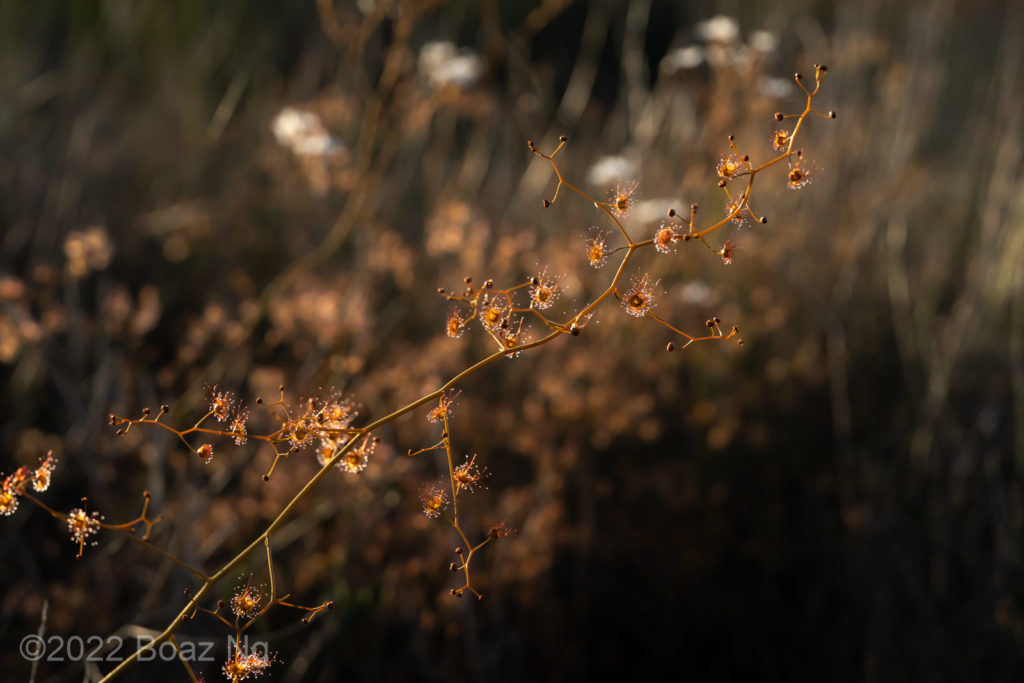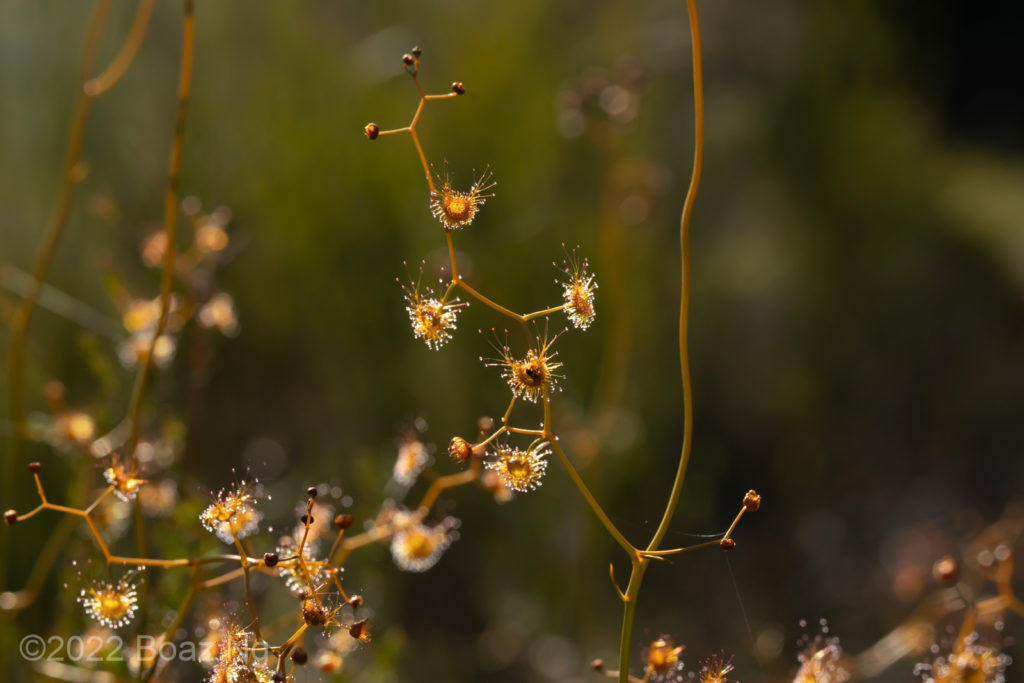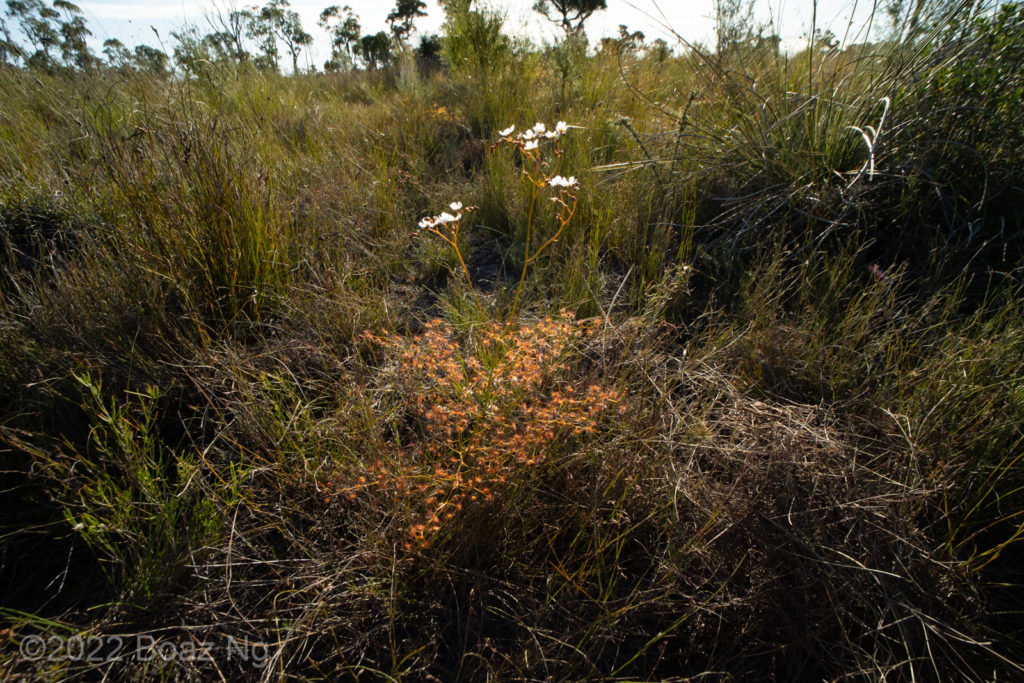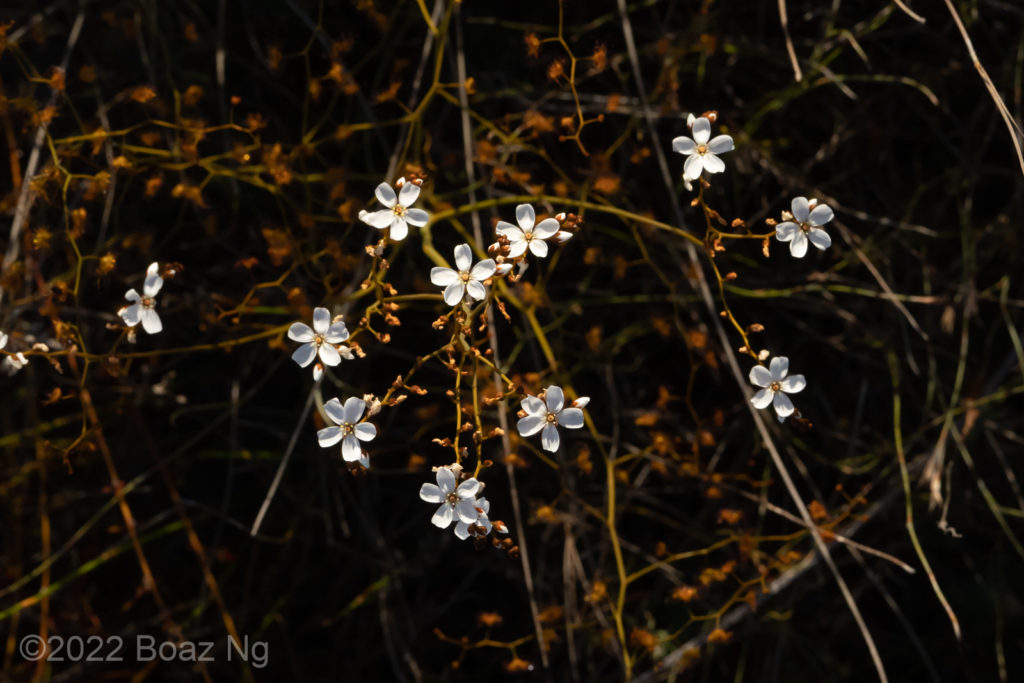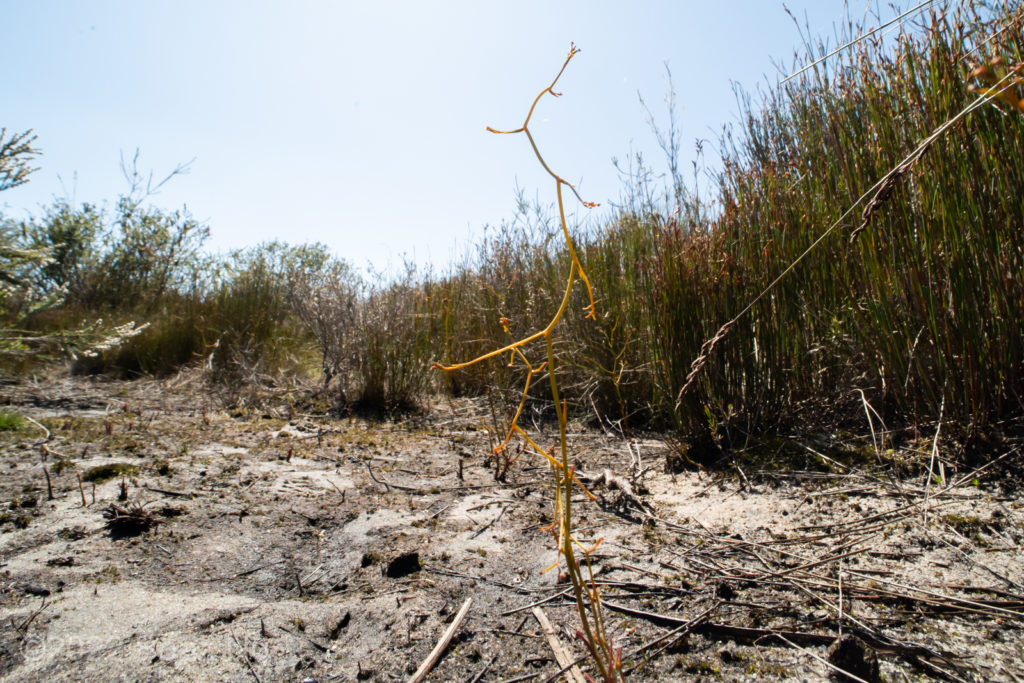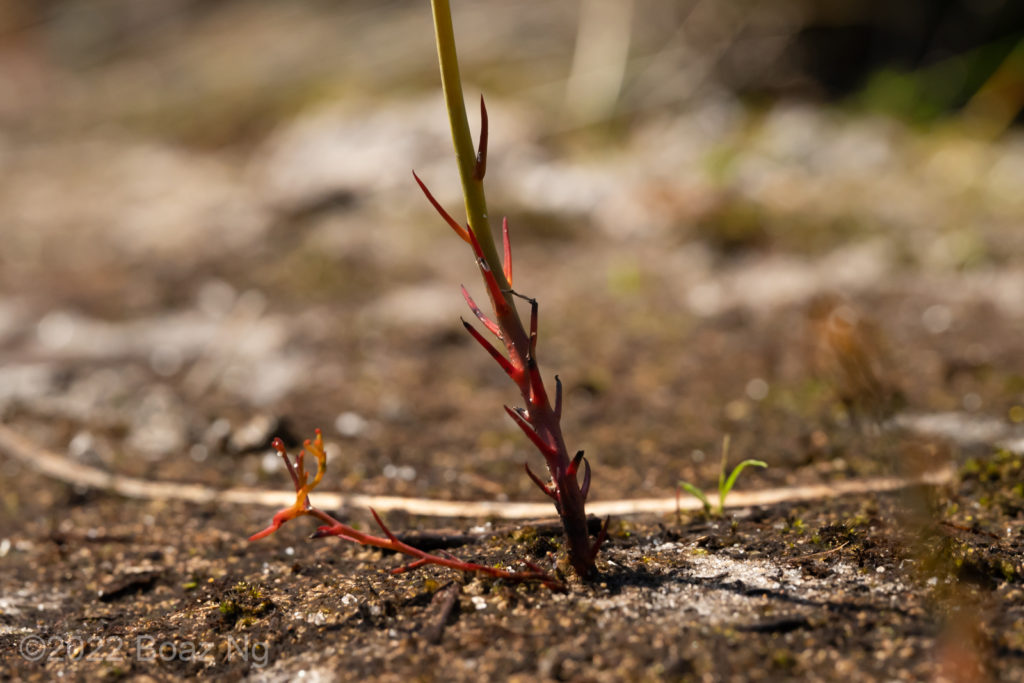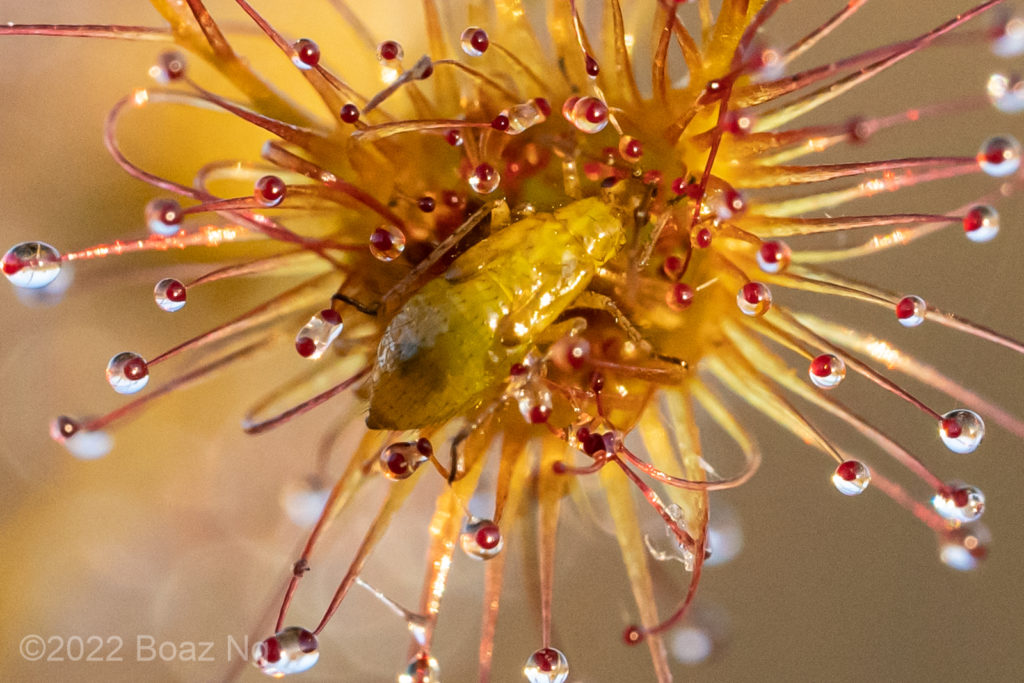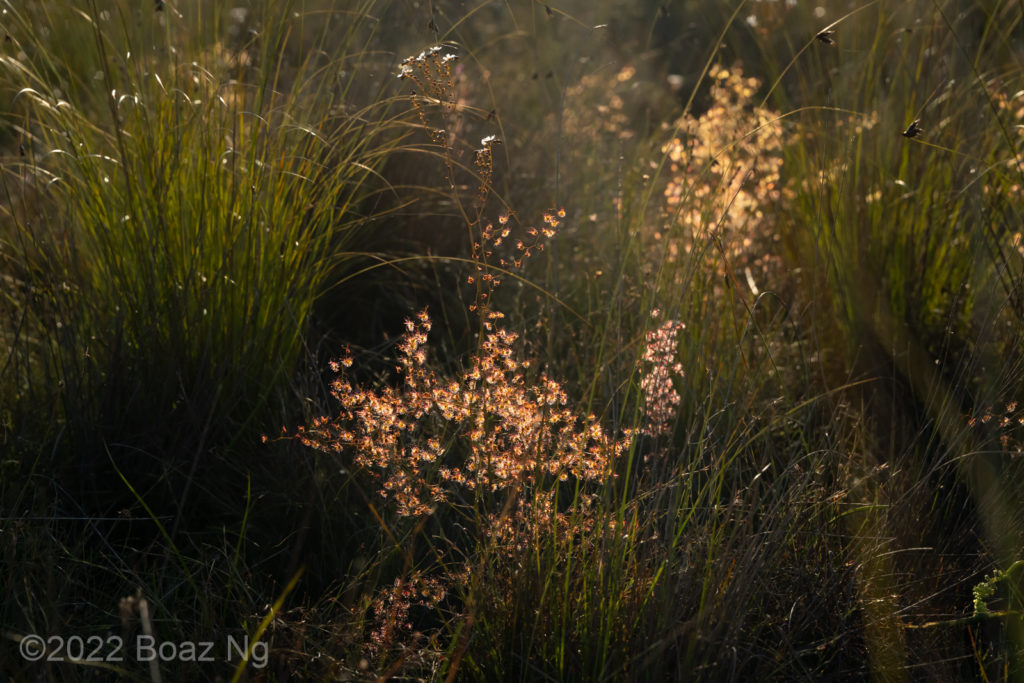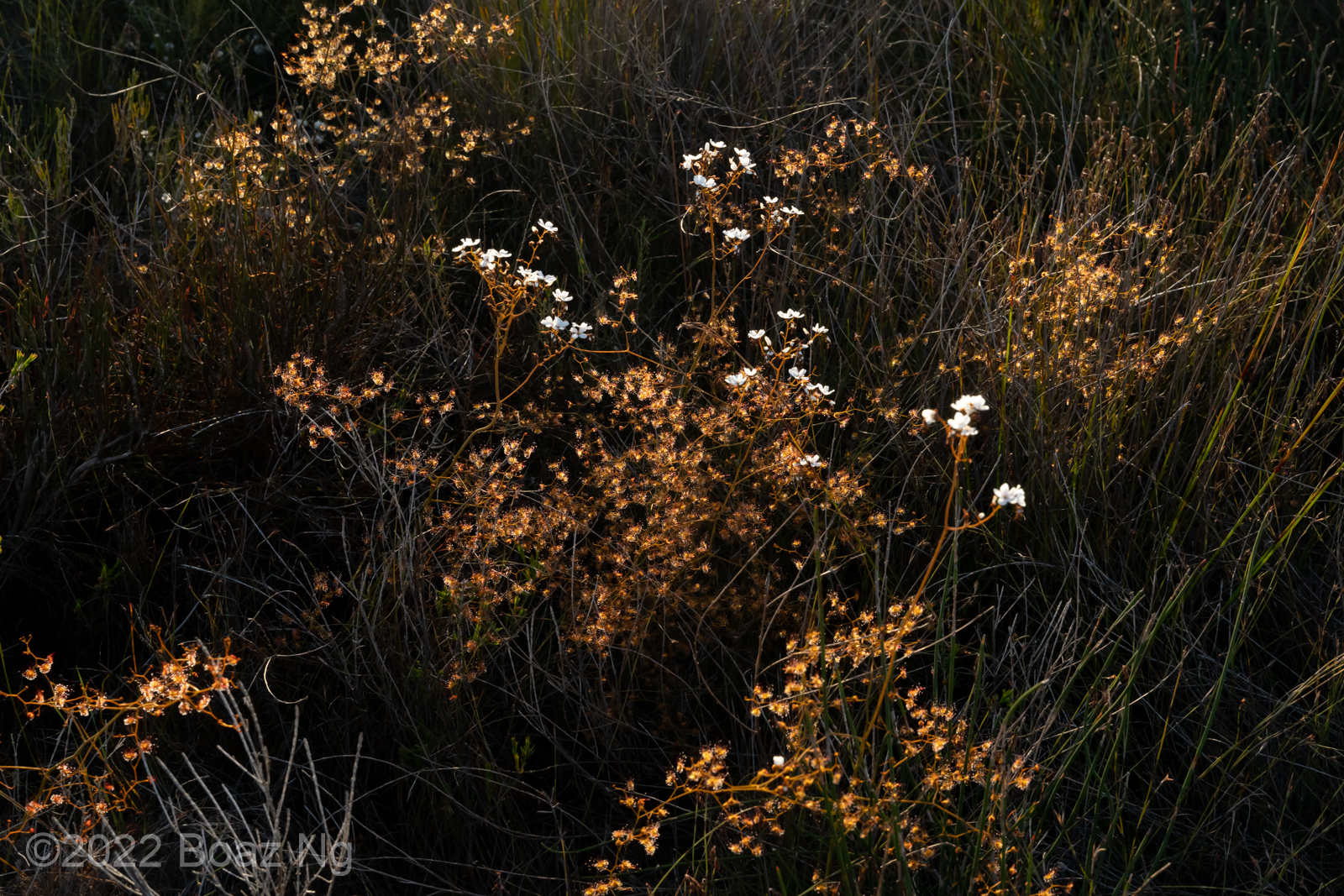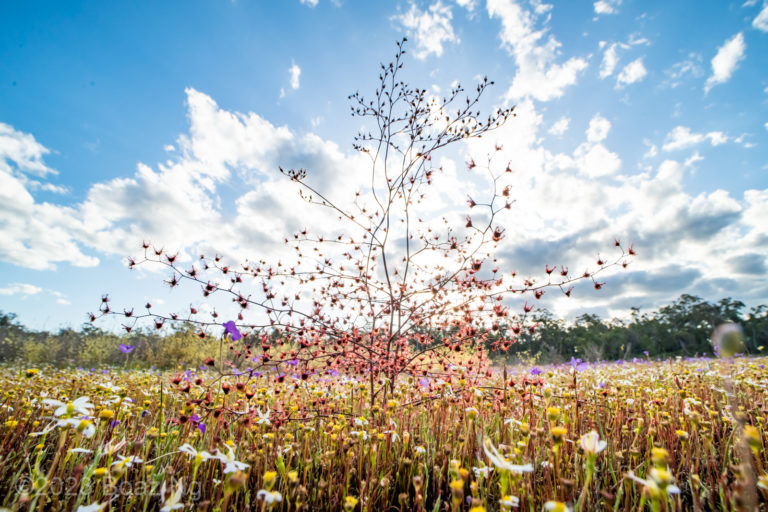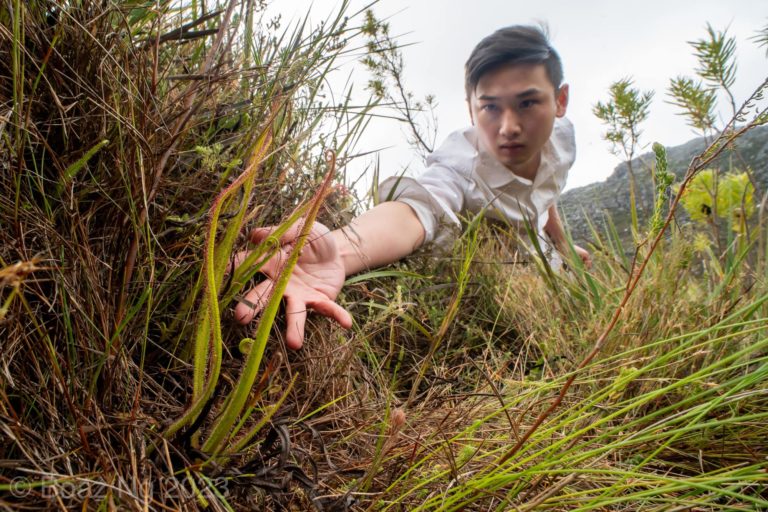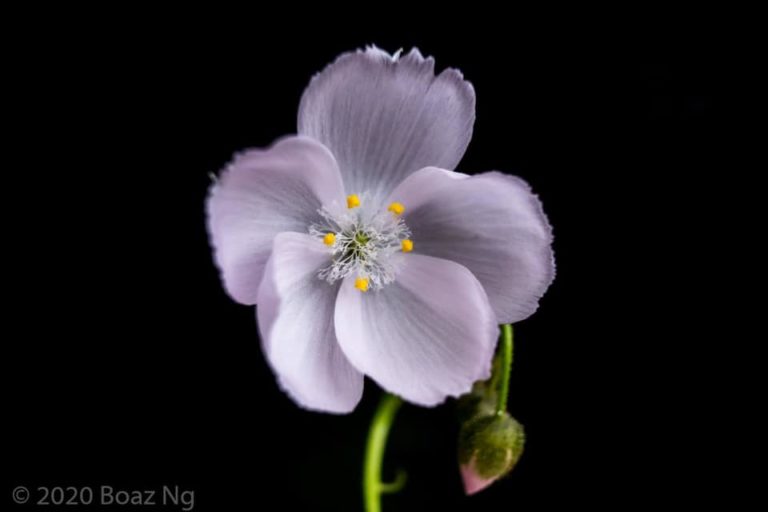Drosera geniculata is a tuberous sundew with a branching, tree-like morphology. The species is named for its zigzagging branches (geniculatus = bent sharply).
Drosera geniculata is a large sundew that has a self-supporting stem up to 60 cm in height. Many side branches emerge from a central stem. These side stems are strongly zigzagging, with sharp angles where the petioles emerge. The junction of the petioles and stems are sharp, with the generally pointing inwards towards the centre of the plant. The overall colour of the plant is orange or reddish. An inflorescence of many small white flowers is produced at the apex of the plant.
The species is endemic to the Swan- and Scott Coastal Plains where it grows in deep sandy soils, blackened by organic material at the periphery of poorly drained swamps. The sundew breaks dormancy at the end of winter to early spring. Flowers are produced in spring.
The closest relative of Drosera geniculata is Drosera gigantea, which shares its tree-like morphology. Drosera geniculata is distinguished by its strongly zigzagging stem, with petioles that point inwards towards the center of the plant (the stems of D. gigantea are not strongly zigzagging and the petioles point outwards). Although D. geniculata is usually orange or reddish, colour is not a reliable indicator with D. gigantea ranging from green to red.
Given the close relationships between the two species and their overlapping distributions, it is not immediately clear what drives their separation. Both species are associated with water but D. geniculata seems to prefer the edges of poorly drained swamp systems whereas D. gigantea prefers moving water such as that found in wide creeks and seepages near granite outcrops.
